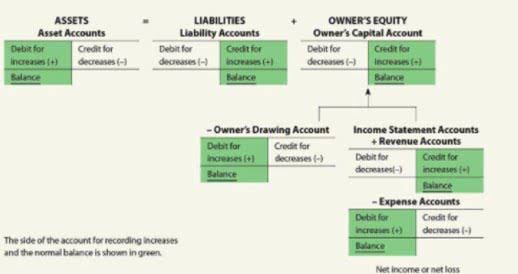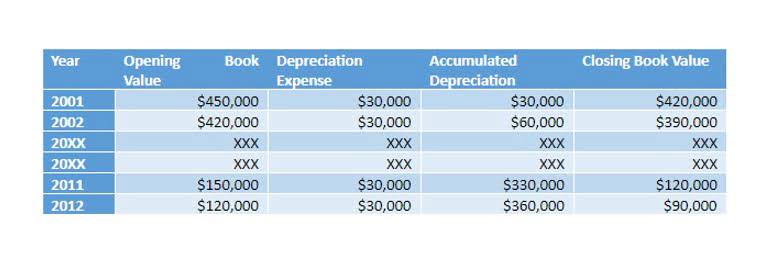1 2: Distinguish between Financial and Managerial Accounting Business LibreTexts

It compares the inflow and outflow of funds as documented in two comparative balance sheets. Forecasting is the act of predicting how financial situations will shape the future. Trend analysis involves the study of patterns and trends of product costs to recognize reasons for unusual variances.
Resources and continuous learning

By learning about management accounting, you can determine what accounting level, types and functions can help your business succeed. You can set up most of the analyses needed for management accounting fairly easily with business accounting software, which often includes many of the accounting formulas you’ll need. Most companies don’t need every formula, but all small businesses can benefit from at least some management accounting reports.

Constraint analysis:
This method provides transparency to key stakeholders so that they can see where the money goes and why. Financial professionals typically use reports like balance sheets and debt-to-equity ratios to help companies determine borrowed capital amounts. Cash flow analysis studies the impact of a single financial decision or transaction to see the true impact of that purchase or decision. Financial professionals may look at several options and ways to finance a purchase based on that analysis. Cash flow analysis lets organizations make informed financial decisions and maintain sufficiently liquid assets in the short term.
Planning for the Future
- A managerial accountant may identify the carrying cost of inventory, which is the amount of expense a company incurs to store unsold items.
- In order to achieve business goals, managerial accounting uses a number of different techniques.
- Performance reports are used to note the deviation of actual results compared what was budgeted.
- In managerial accounting, the main focus will be on financial decisions that affect the internal workings of a company.
- If you go beyond or below that range, cost relationships won’t be valid and could result in abnormal cost behaviors.
It provides internal managers or employees with useful insights that assist the organization’s management in planning strategic operations. It helps them set realistic goals, and encourages an efficient directing of company resources.Financial accounting is more concerned with providing insights to external parties such as investors and financial bodies. The general purpose of financial statement reporting is to provide information about the results of operations, financial position, and cash flows of an organization. The purpose of the reporting done by management accountants is more specific to internal users. Management accountants make available the information that could assist companies in increasing their performance and profitability. Unlike financial reports, management reporting centers on components of the business.
2 Distinguish between Financial and Managerial Accounting
Although the funds transfer pricing process is primarily applicable to the loans and deposits of the various banking units, this proactive is applied to all assets and liabilities of the business segment. Both financial reports and managerial reports use monetary accounting information, or information relating to money or currency. Financial https://www.bookstime.com/pricing reports use data from the accounting system that is gathered from the reporting of transactions in the form of journal entries and then aggregated into financial statements. Managerial accounting uses some of the same financial information as financial accounting, but much of that information will be broken down to a more detailed level.

Understanding these relationships can help managers and small business owners predict the future (planning function) and evaluating actual results (monitoring function). The main tool used in CVP analysis is the breakeven point or the point at which total cost is equal to total revenue. Budgeting is the process of formalizing business goals and objectives managerial accounting into quantitative form. The end result of budgeting is a budget, a document that shows the business’ commitment to execute plans, acquire resources, and use resources. The central document for the financial aspect of business planning is the master budget. It is an aggregation of all lower-level budgets, schedules, and proforma financial statements.
- The most important issue is whether the reporting is useful for the planning, controlling, and evaluation purposes.
- Comparing differences in actual and budgeted amounts is another form of variance analysis.
- These documents focus on internal company metrics that focus on company performance.
- Business managers collect information that feeds into strategic planning, helps management set realistic goals, and encourages efficiently directing company resources.
- Managerial accounting is the process of identifying and analyzing financial information so that management personnel can make better-informed business decisions.
Forecasting, Financial Planning, and Trend Analysis
- The key differences between managerial accounting and financial accounting relate to the intended users of the information.
- It is usually based on past experiences and contains all the planned earnings and expenditures expected by a business within a period.
- Revenue represents the gross amount of income since it’s the figure before expenses are deducted.
- This includes the use of standard capital budgeting metrics, such as net present value and internal rate of return, to assist decision-makers on whether to embark on capital-intensive projects or purchases.
- Financial accounting, on the other hand, serves to inform the business’s external stakeholders and must comply with accounting regulations, including GAAP.
- Furthermore, capital budgets outline potential future expenses, such as acquisitions, new equipment purchases, facility upgrades, and long-term project investments.







